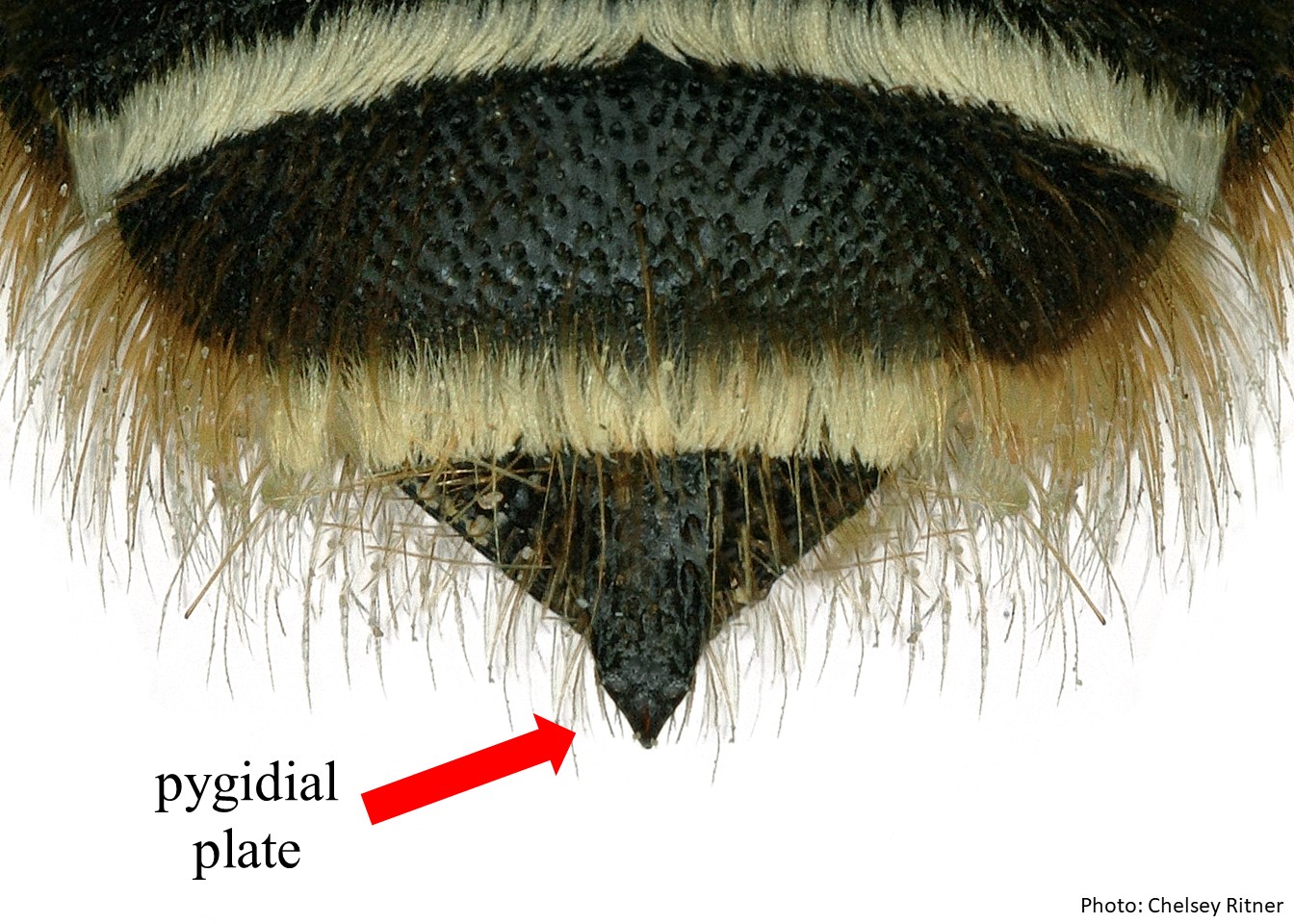Family: Apidae
Subfamily: Xylocopinae
Tribe: Xylocopini
Genus: Xylocopa
Subgenus: Rhysoxylocopa, Hurd and Moure 1963Hurd and Moure 1963:
Hurd, P.D. and J.S. Moure. 1963. A Classification of the Large Carpenter Bees (Xylocopine) (Hymenoptera: Apoidea). University of California Publications in Entomology (Vol. 29). Berkeley and Los Angeles: University of California Press, 365 pp.
Common name: Carpenter bee
Xylocopa (Rhysoxylocopa) are small to medium sized bees, 10 – 25 mm in length, with dark brown to black integumentintegument:
a tough, protective outer layer
. They have a thick, almost entirely pale, pubescencepubescence:
short, fine hair
throughout their body. Their wings are hyalinehyaline:
transparent, glassy
to dark brown with little to no iridescent reflections (Hurd and Moure 1963Hurd and Moure 1963:
Hurd, P.D. and J.S. Moure. 1963. A Classification of the Large Carpenter Bees (Xylocopine) (Hymenoptera: Apoidea). University of California Publications in Entomology (Vol. 29). Berkeley and Los Angeles: University of California Press, 365 pp.).
Xylocopa (Rhysoxylocopa) contains 8 species (Ascher and Pickering 2022Ascher and Pickering 2022:
Ascher, J.S. and J. Pickering. 2022. Discover Life bee species guide and world checklist (Hymenoptera: Apoidea: Anthophila). https://www.discoverlife.org/mp/20p?see=Nodulaamp;name=Xylocopaamp;flags=subgenus:).
Xylocopa (Rhysoxylocopa) is known from France, Spain, and Northern Africa (Michener 2007Michener 2007:
Michener, C.D. 2007. The Bees of the World (2nd ed.). Johns Hopkins University Press, Baltimore and London, 953 pp.).

Distribution map generated by Discover Life -- click on map for details, credits, and terms of use.
Xylocopa (Rhysoxylocopa) are generalist pollinators, like many Xylocopa subgenera, and have been observed visiting the flowers of the plant families Asteraceae, Cardueae, Fabaceae, and Lamiaceae (Terzo et al. 2007Terzo et al. 2007:
Terzo M., S. Iserbyt, and P. Rasmont. 2007. Reacute;vision des Xylocopinae (Hymenoptera: Apidae) de France et de Belgique. Annales de la Socieacute;teacute; Entomologique de France 43 (4): 445‒491.).
(modified from Hurd and Moure 1963Hurd and Moure 1963:
Hurd, P.D. and J.S. Moure. 1963. A Classification of the Large Carpenter Bees (Xylocopine) (Hymenoptera: Apoidea). University of California Publications in Entomology (Vol. 29). Berkeley and Los Angeles: University of California Press, 365 pp.)
 with subapicalsubapical:
with subapicalsubapical:Xylocopa (Rhysoxylocopa) is most similar to X. (Xylomelissa). Males of X. (Rhysoxylocopa) can be distinguished by their small, asymmetrical, and complex propodealpropodeal:
the last segment of the thorax
spiracles. Females can be distinguished by the long length of the first flagellar segment (Hurd and Moure 1963Hurd and Moure 1963:
Hurd, P.D. and J.S. Moure. 1963. A Classification of the Large Carpenter Bees (Xylocopine) (Hymenoptera: Apoidea). University of California Publications in Entomology (Vol. 29). Berkeley and Los Angeles: University of California Press, 365 pp.).
The nesting habits of Xylocopa (Rhysoxylocopa) have not been recorded but it is likely that they nest in stems and branches like most other Xylocopa subgenera.
There are no known invasives.
Hurd, P.D. and J.S. Moure. 1963. A Classification of the Large Carpenter Bees (Xylocopine) (Hymenoptera: Apoidea). University of California Publications in Entomology (Vol. 29). Berkeley and Los Angeles: University of California Press, 365 pp.
Michener, C.D. 2007. The Bees of the World (2nd ed.). Johns Hopkins University Press, Baltimore and London, 953 pp.
Terzo, M., S. Iserbyt, and P. Rasmont. 2007. Révision des Xylocopinae (Hymenoptera: Apidae) de France et de Belgique. Annales de la Société Entomologique de France 43(4): 445-491.